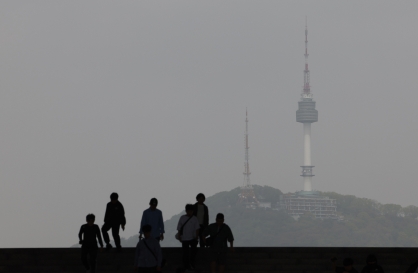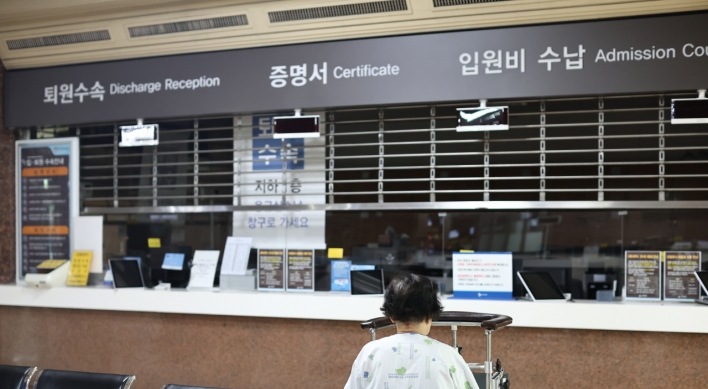This summer’s scenes of ragged Central American children and teenagers crammed into makeshift detention centers didn’t exactly affirm Lady Liberty’s invitation to “your tired, your poor, your huddled masses yearning to breathe free.”
Rest assured, however, that your well-rested, your rich, your coddled elites face their own difficulties opening the golden door to U.S. citizenship. Exhibit A is the dysfunctional U.S. program that’s meant to grant foreign investors green cards in return for investments in new U.S. enterprises that create jobs.
Here’s how it’s supposed to work: A foreign investor ponies up $1 million for a U.S. business that creates at least 10 full-time jobs within two years. Or, puts just $500,000 in a venture located in a “targeted employment area” ― certain narrowly defined rural areas, or places where the unemployment rate is 150 percent of the national average. In return, the investor (and his or her spouse and children) can apply for a green card. The U.S. sets aside 10,000 visas a year to be issued in this way.
In theory, the so-called EB-5 visa program should draw new capital where it’s badly needed, from investors willing to accept a lower rate of return in exchange for the benefits of U.S. residency. And its promise should only increase in the decade ahead, with the number of centa-millionaires set to double in India and China ― two countries where demand for U.S. visas is high.
In practice, though, the program has been something between a boondoggle and a bureaucratic fiasco. The investments it has attracted have flowed not so much to risky manufacturing or technology businesses as to big real estate ventures that don’t need help. Swanky neighborhoods have been designated as targeted employment areas in order to attract investments ― for instance, in an attempt to revive Washington’s Watergate Hotel. The U.S. Securities and Exchange Commission has investigated several EB-5 ventures for straight-out lying to foreign investors and stealing their money.
On top of all that, the program has been badly managed. At first, requirements to qualify were so complicated, demand was low. Now, there’s a huge backlog, so applications take as long as 20 months to process. Record-keeping has been so poor, the Department of Homeland Security’s inspector general reported that administrators could only “speculate about how foreign investments are affecting the U.S. economy and whether the program is creating U.S. jobs as intended.”
What’s needed, to help the EB-5 program realize its potential, are ways to ensure that the investment money is channeled to the places where it can make a difference ― to distressed urban communities, for instance. That means more stringent, and honest, designations of targeted employment areas and better scrutiny of the business ventures involved. Immigration officials may not be qualified to handle this, but the Department of Commerce could lend its expertise.
It also means improved data collection and speedier process of applications. Investment rules need tightening, too, so that a $500,000 investor tagging along on a $520 million hotel project, for example, can’t take credit for all the jobs it creates. And how about raising that $500,000 price of admission, which was set in 1990 and is lower than for similar programs in Cyprus, Ireland, Malta and Portugal.
Some, but not all, of these ideas for improving the EB-5 program are contained in the immigration bill that was passed by the Senate last spring, and is now awaiting action by the House of Representatives. A country where legislators from opposing parties actually worked together to turn smart ideas into good laws ― now that would be a country worth investing in.
(Editorial, Bloomberg)
Rest assured, however, that your well-rested, your rich, your coddled elites face their own difficulties opening the golden door to U.S. citizenship. Exhibit A is the dysfunctional U.S. program that’s meant to grant foreign investors green cards in return for investments in new U.S. enterprises that create jobs.
Here’s how it’s supposed to work: A foreign investor ponies up $1 million for a U.S. business that creates at least 10 full-time jobs within two years. Or, puts just $500,000 in a venture located in a “targeted employment area” ― certain narrowly defined rural areas, or places where the unemployment rate is 150 percent of the national average. In return, the investor (and his or her spouse and children) can apply for a green card. The U.S. sets aside 10,000 visas a year to be issued in this way.
In theory, the so-called EB-5 visa program should draw new capital where it’s badly needed, from investors willing to accept a lower rate of return in exchange for the benefits of U.S. residency. And its promise should only increase in the decade ahead, with the number of centa-millionaires set to double in India and China ― two countries where demand for U.S. visas is high.
In practice, though, the program has been something between a boondoggle and a bureaucratic fiasco. The investments it has attracted have flowed not so much to risky manufacturing or technology businesses as to big real estate ventures that don’t need help. Swanky neighborhoods have been designated as targeted employment areas in order to attract investments ― for instance, in an attempt to revive Washington’s Watergate Hotel. The U.S. Securities and Exchange Commission has investigated several EB-5 ventures for straight-out lying to foreign investors and stealing their money.
On top of all that, the program has been badly managed. At first, requirements to qualify were so complicated, demand was low. Now, there’s a huge backlog, so applications take as long as 20 months to process. Record-keeping has been so poor, the Department of Homeland Security’s inspector general reported that administrators could only “speculate about how foreign investments are affecting the U.S. economy and whether the program is creating U.S. jobs as intended.”
What’s needed, to help the EB-5 program realize its potential, are ways to ensure that the investment money is channeled to the places where it can make a difference ― to distressed urban communities, for instance. That means more stringent, and honest, designations of targeted employment areas and better scrutiny of the business ventures involved. Immigration officials may not be qualified to handle this, but the Department of Commerce could lend its expertise.
It also means improved data collection and speedier process of applications. Investment rules need tightening, too, so that a $500,000 investor tagging along on a $520 million hotel project, for example, can’t take credit for all the jobs it creates. And how about raising that $500,000 price of admission, which was set in 1990 and is lower than for similar programs in Cyprus, Ireland, Malta and Portugal.
Some, but not all, of these ideas for improving the EB-5 program are contained in the immigration bill that was passed by the Senate last spring, and is now awaiting action by the House of Representatives. A country where legislators from opposing parties actually worked together to turn smart ideas into good laws ― now that would be a country worth investing in.
(Editorial, Bloomberg)
-
Articles by Korea Herald





![[AtoZ Korean Mind] Does your job define who you are? Should it?](http://res.heraldm.com/phpwas/restmb_idxmake.php?idx=644&simg=/content/image/2024/05/06/20240506050099_0.jpg&u=)













